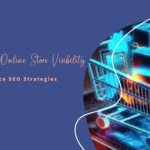Starting an e-commerce business in 2025 is a golden opportunity for entrepreneurs. The world of online shopping is evolving rapidly, and now is the perfect time to dive in. Whether you’re a seasoned seller or a first-time business owner, this guide will walk you through everything you need to know to launch your successful e-commerce business.
Step 1: Find Your Niche
The first crucial step to starting an e-commerce business is identifying your niche. It’s important to choose a market segment that resonates with your passion and offers a profitable opportunity. For instance, focus on trending products like eco-friendly goods or tech accessories, or tap into underserved markets. By finding a niche, you’ll not only differentiate yourself from competitors but also attract a more targeted audience.
Step 2: Choose the Right E-Commerce Platform
Once you’ve chosen your niche, the next step is selecting the best platform to host your online store. With countless options available, the choices can be overwhelming. Platforms like Shopify, WooCommerce, and BigCommerce are all excellent, but it’s crucial to choose one that aligns with your business needs. For example, if you’re looking for ease of use and scalability, Shopify might be your best bet. Remember, the platform you choose will serve as the backbone of your e-commerce business.
Step 3: Create a Powerful Brand Identity
In the highly competitive world of e-commerce, your brand identity is everything. Powerful branding will set you apart and make your business memorable. Start by designing a sleek, professional logo, crafting a compelling story, and ensuring your tone of voice resonates with your target customers. Moreover, a well-defined brand strategy helps build trust with potential buyers. When they know and love your brand, they’re more likely to make a purchase.
Step 4: Build a User-Friendly Website
Your website is the first impression customers will have of your e-commerce business, so make it count. Invest in a clean, user-friendly website design that is easy to navigate. This includes having an intuitive product page layout, fast loading speeds, and secure payment gateways. User experience plays a huge role in conversion rates, and an attractive, functional site ensures that your customers stay longer and make purchases more often.
Step 5: Develop a Winning Marketing Strategy
No matter how great your products are, without an effective marketing strategy, your e-commerce business won’t thrive. Thankfully, the digital world provides numerous marketing tools at your disposal. Start by implementing a combination of social media campaigns, email marketing, and search engine optimization (SEO). Consider using influencer marketing to boost brand awareness or run targeted ads on platforms like Facebook and Instagram.
Step 6: Focus on Customer Experience
In 2025, customer experience is one of the top factors that influence purchasing decisions. If you want repeat customers and loyal followers, prioritize providing an exceptional experience. This includes offering fast shipping, easy returns, and excellent customer support. Additionally, using live chat features, personalized email responses, and loyalty programs can enhance customer satisfaction.
Step 7: Optimize Your Operations
After the initial setup, focus on streamlining your operations for maximum efficiency. Use inventory management tools, automate emails, and track analytics to monitor customer behavior. This data allows you to tweak your sales tactics, inventory decisions, and marketing efforts. By continuously optimizing your operations, you can improve profitability and grow your e-commerce business more rapidly.
Step 8: Expand and Scale
Once your e-commerce business has established a solid foundation, it’s time to scale. This can be done by introducing new products, expanding into new markets, or even partnering with influencers and affiliates to reach a broader audience. Scaling means reinvesting profits back into your business for continued growth. It’s an exciting phase where you can explore new expansion opportunities.
Conclusion: Take Action Now!
Starting an e-commerce business in 2025 is the perfect opportunity to tap into a booming industry. By following the steps outlined above, you’re well on your way to building a successful online store that stands out in the crowded marketplace. Remember, success doesn’t happen overnight, but with the right strategy, dedication, and a clear vision, you can create a thriving e-commerce empire.



